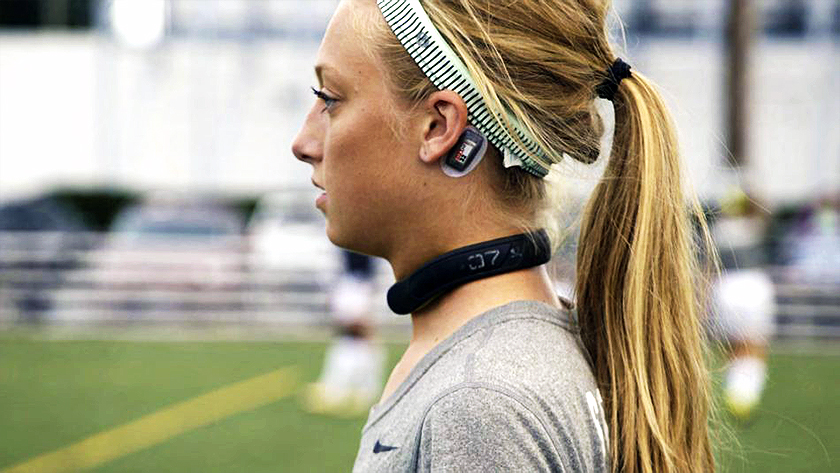
Researchers at University Health Network and the University of Toronto have verified the mechanism by which neck compression collars protect against concussions.
To prevent concussions in athletes, a team of doctors, including Dr. Joseph Fisher from the Toronto General Hospital Research Institute and Dr. David Smith, an internist in Richmond Indiana, developed a unique piece of protective equipment called the Q-Collar. This small neck collar gently compresses the muscles that surround the veins that drain blood from the head. Researchers have shown that the Q-Collar reduces the cumulative impact of head injuries over time, but the mechanism underlying this protective effect remained uncertain.
When the head is jolted or hit, the brain, which is suspended in protective fluid, can bounce or ‘slosh’ around. This sloshing can damage the brain and lead to concussions. Neuroscientists believe that the Q-Collar works by increasing the brain’s blood volume, causing it to fit more snugly within the skull and reducing the amount of brain slosh after impact.
“Demonstrating the filling of the empty space within the skull was the missing link in understanding how neck compression collars protect the brain,” explains Dr. Lashmi Venkat Raghavan, senior author of the study and Clinician Investigator at the Krembil Research Institute. “This mechanism has been challenging to confirm experimentally, because brain volume naturally increases when an individual lays down, as they do during traditional brain imaging procedures.”
To overcome the difficulties associated with measuring brain volume, the team instead measured pressure inside the skull, which is closely linked to brain volume. They also ensured that all participants were seated during the tests to avoid volume changes caused by laying down.
To measure pressure, the team took advantage of the fact that when pressure increases, the membranes around the optic nerves balloon out a bit—an effect that can be observed noninvasively using ultrasound.
The researchers carried out ultrasound measurements in 19 adults before and after compressing the internal jugular veins low in the neck for three to four minutes. This compression would be expected to mimic the effects of wearing a Q-Collar. The team found that the optic nerve sheath increased in size from 4.6 mm to 4.9 mm, signalling increased pressure within the skull.
"We have provided clear evidence that neck compression leads to filling of the space inside the skull, which would reduce brain slosh and the potential for injury,” says Dr. Michael Dinsmore, lead author of the study and an Assistant Professor in the Department of Anesthesiology and Pain Medicine at the University of Toronto. “Important next steps are to determine the magnitude and duration of the protective effect of neck compression, and the influence of individual characteristics such as age, sex and body mass.”
This work was supported by the UHN Foundation.
Dinsmore M, Hajat Z, Brenna CT, Fisher J, Venkatraghavan L. Effect of a neck collar on brain turgor: a potential role in preventing concussions? Br J Sports Med. 2021 Nov 25. doi: 10.1136/bjsports-2021-103961.

Dr. Lashmi Venkat Raghavan (left) is a Clinician Investigator at the Krembil Research Institute. He is also the Director of the Neuroanesthesia Program at Toronto Western Hospital. Dr. Michael Dinsmore (right) is an Assistant Professor in the Department of Anesthesiology and Pain Medicine at the University of Toronto and a Staff Anesthetist at Toronto Western Hospital.




